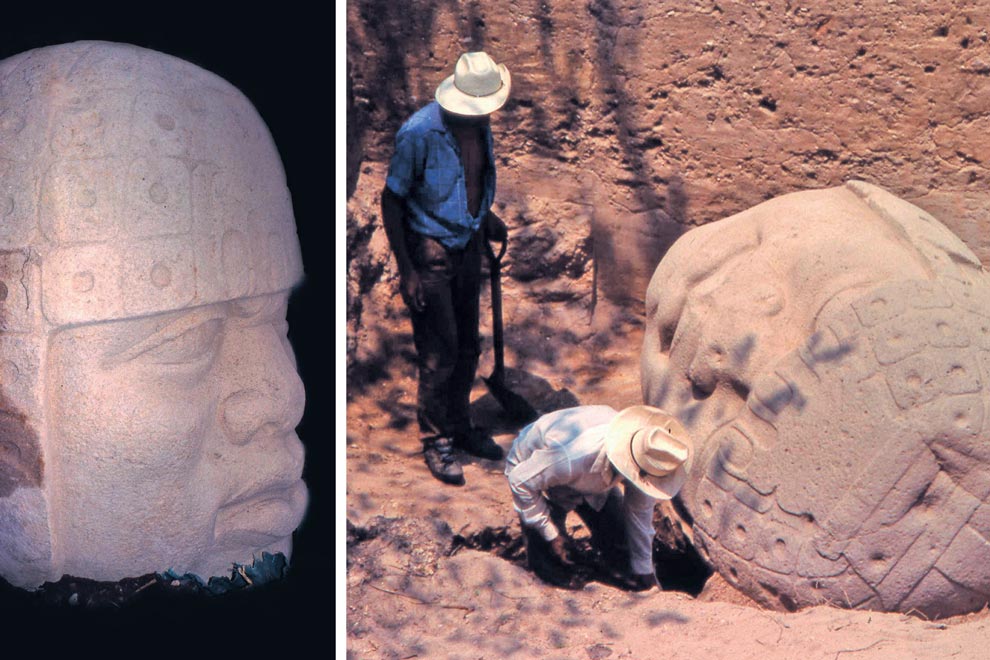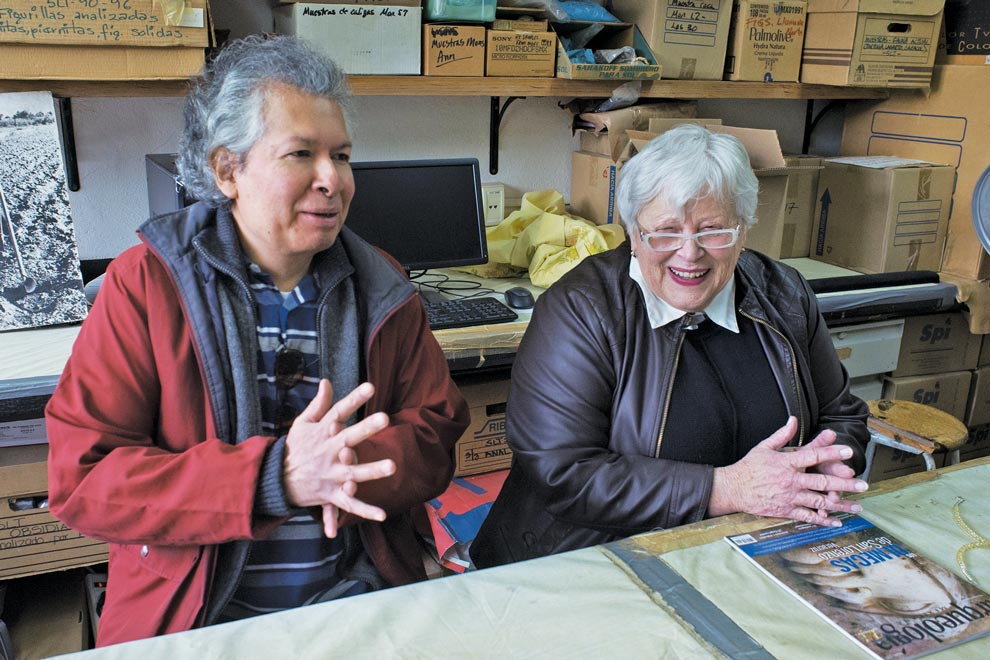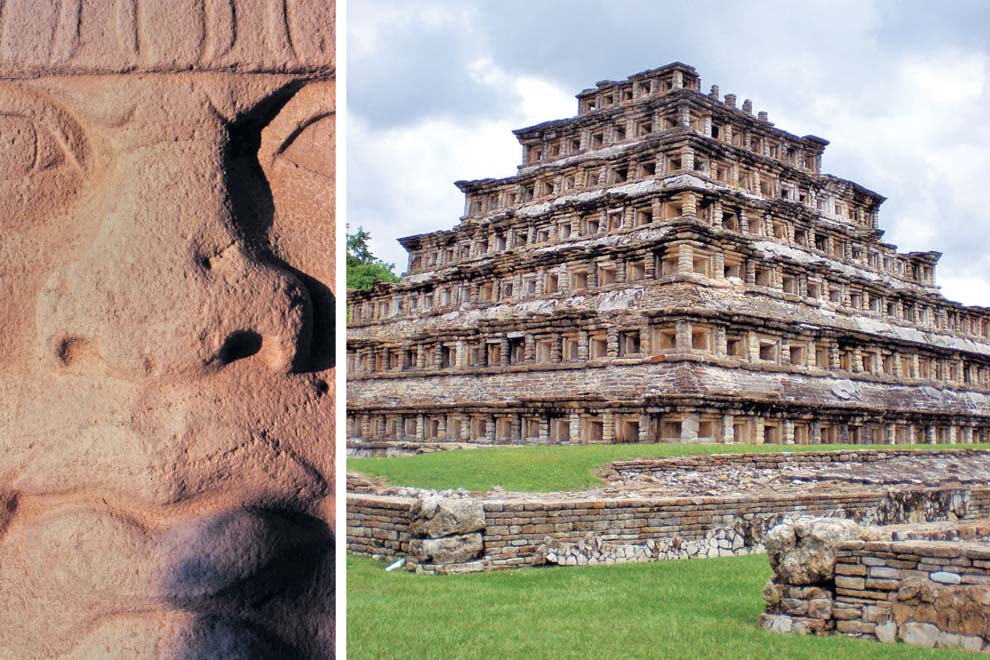OLMEC COLOSSAL HEADS ARE OF MESOAMERICAN AND NON-AFRICAN ORIGIN
Gigantic head of Hueyápan". Reproduction in the 1877 edition of Mexico through the centuries . Reprography: MAP / Raíces. Ark of Historical Collections of the Francisco Xavier Clavigero Library, Universidad Iberoamericana.
DNA studies and the origin of the Olmecs "Gigantic head of Hueyápan". Reproduction in the 1877 edition of Mexico through the centuries . Reprography: MAP / Raíces. Ark of Historical Collections of the Francisco Xavier Clavigero Library, Universidad Iberoamericana.
DNA STUDIES AND THE ORIGIN OF THE OLMECSEnrique Villamar Becerril
Creators of a culture in which they left an original display of prodigious creativity and talent, the first interpretation relative to the Olmecs addressed their possible ethnic origin, based on their most distinctive stone manifestation: a colossal head, Monument A of Tres Zapotes, according to their subsequent classification.
The proposal dates back to 1871 when, ironically, the Olmec did not figure in the panorama of archaeological cultures in Mexico. During a tour of Veracruz, José Melgar, interested in antiquities, learned of the fortuitous discovery of a huge stone sculpture by peasants on a farm in Hueyapan, today Tres Zapotes. Unprecedented for a similar piece in the then corpus of pre-Hispanic sculpture, José Melgar saw an unusual, surprising and enigmatic demonstration of the inexhaustible cultural wealth that awaited on Mexican soil. Skilled craftsmen detailed the racial physiognomy of the face sculpted in the stone, Melgar considered. In this he saw reliable evidence of transoceanic contacts, long before Columbus, which led to the presence of black individuals in America. With the years, The idea of the African origin of the Olmecs persists in the thinking of many people, since the same facial features that caused Melgar's amazement ended up being the constant in Olmec monuments. It remained to be known what information the skeletal remains could provide.
In the investigations of the San Lorenzo Tenochtitlán Archaeological Project at the sites of San Lorenzo and Loma del Zapote, several human burials from the Olmec period were located. The bone consistency in two of them allowed the successful study of their mitochondrial DNA, as part of an investigation that proposes the comparative analysis of the genetic information of the Olmecs with that obtained from subjects from other Mesoamerican societies, under the advice of the specialists María de Lourdes Muñoz Moreno and Miguel Moreno Galeana, from Cinvestav.
In the cells of our body there are two types of DNA. The nuclear, represented by chromosomes, and the mitochondrial. Mitochondria are small organelles external to the nucleus, responsible for producing the energy required by cellular metabolism. Mitochondrial DNA (MTDNA), contrary to nuclear, is inherited only through the mother to sons and daughters, and they have been the only ones to transmit it throughout the history of mankind. Therefore, mitochondrial lineages, called haplogroups given their uniparental (maternal) origin, are so ancestral that they transcend geographic, cultural, and temporal boundaries. This property of the ADNMT offers anthropology a means to trace the historical development of contemporary and also past populations. Thanks to this, the repertoire of maternal lineages is known on a global scale,
Enrique Villamar Becerril. Physical anthropologist by the ENAH. Candidate for a doctorate in Mesoamerican Studies (UNAM), with an analysis of MTDNA in skeletal remains from various sites of the Preclassic period.
Villamar Becerril, Enrique, "DNA studies and the origin of the Olmecs", Mexican Archeology no. 150, pp. 40-41.
OLMEC COLOSSAL HEADS ARE OF MESOAMERICAN AND NON-AFRICAN ORIGIN
Debunking The Black Indian Myth: From They Came Before Columbus to Hidden Color.
Dwayne Wong (Omowale)
In They Came Before Columbus, Ivan Van Sertima put forward the argument that African people were in the Americas long before Columbus was. There are some problems with this theory. In the first place, there are no Egyptian historical records which suggest that the Egyptians ever sailed to America or even attempted such a journey. In They Came Before Columbus, Van Sertima argues that Egyptian journey to the Americas happened during the rule of the 25th dynasty, which was the Kushite dynasty that ruled Egypt. Van Sertima never explained why he selected this particular dynasty, but his reasoning for doing so is important because he later altered the date in African Presence in Early America to “948 or circa 1000 B.C.” Van Sertima was forced to alter his thesis in light of new evidence which demonstrated that the Olmec civilization was older than was originally believed, which leads me to the next issue.
Because the Olmec civilization is one that has been largely shrouded in mystery, there have been a number of theories about the historical roots of the Olmec. Van Sertima was among those who argued that the Olmec had African origins, whereas others such as Mike Xu have argued that the Olmec civilization has Asian roots. Not only because of the apparent Asian features of some of the Olmec sculptures, but Xu also attempted to draw a connection between the Olmec script and Chinese characters.

Below are pictures of various Olmec sculptures.







There have been a number of diffusion theories regarding the Olmec. Van Sertima’s case in They Came Before Columbus is the best known, certainly not the only one. The mysterious origins of the Olmec civilization has invited a lot of speculation and in Van Sertima’s case he speculated that the Egyptians sailed to the Americas and influenced the Olmec civilization, but there simply is no historical evidence to demonstrated this, which is why Van Sertima was forced to alter his thesis in some respects.
Van Sertima also argued it was Columbus himself who suggested that Africans were in the Americas before he was. Van Sertima makes this claim at the very beginning of the video below.
Wednesday, July 4, he ordered sail made from that island in which he says that since he arrived there he never saw the sun or the stars, but that the heavens were covered with such a thick mist that it seemed they could cut it with a knife and the heat was so very intense that they were tormented, and he ordered the course laid to the way of the south-west, which is the route leading from these islands to the south, in the name, he says, of the Holy and Indivisible Trinity, because then he would be on a parallel with the land of the sierra of Loa and cape of Sancta Ana in Guinea, which is below the equinoctial line, where he says that below that line of the world are found more gold and things of value; and that after, he would navigate, the Lord pleasing, to the west, and from there would go to this Española, in which route he would prove the theory of the King John aforesaid; and that he thought to investigate the report of the Indians of this Española who said that there had come to Española from the south and south-east, a black people who have the tops of their spears made of a metal which they call guanin, of which he had sent samples to the Sovereigns to have them assayed, when it was found that of 32 parts, 18 were of gold, 6 of silver and 8 of copper.
Neither Columbus nor de Las Casas wrote anything about African spears. This is an inference that Van Sertima makes, but he presents his inference as a fact. Nowhere does de Las Casas suggest that spears he was referring to were identical or even similar to spears in West Africa. Moreover, how would he have known? Did the Spanish also assay the spears of West Africa to know what ratio of gold, silver and copper alloys were found in the African spears? Van Sertima does not say, but he jumps the conclusion that the spears that were sent to Spain were African spears without providing a basis for why he believes so.
A second problem with the manner in which Van Sertima uses this piece of information is the assumption that the black people whom de Las Casas refers to were African. Columbus was quoted before as noting that the natives sometimes painted themselves black, so for all we know the black people being referred to were people who were painted black as opposed to black skinned people. Even Van Sertima himself admits that the people who were trading these spears could be dark bronze people from South America as opposed to African.
Van Sertima’s scholarship was flawed in many respects, but he made an attempt to challenge the racist scholarship of his time. Unfortunately, the scholarship that he has inspired has tended to be of a worse quality than Van Sertima’s was. For example, whereas Van Sertima argued that Africans influenced the civilization of the Americas, Clyde Ahmad Winters goes further by suggesting that Africans founded the Olmec and all other major American civilization, which is a claim that Van Sertima never made. Winters writes:
The first civilization to appear in America, called the Olmec culture was founded by Africans…The original Maya were probably Africans…The Aztecs, Zapotecs, Toltecs, and Maya usually occupied urban centers built by Africans, or Afro-Indians.
Hidden Colors also makes the argument that Africans were in the Americas before Columbus. In the documentary, Umar Johnson claims that Africans were going back and forth engaging in cultural and economic trade before Columbus. In How Europe Underdeveloped Africa, Walter Rodney explained that “if any African canoes reached the Americas (as is sometimes maintained) they did not establish two-way links.” If these two-way links were established, Umar fails to cite specific examples because there are no examples. This two-way trade never happened. Phil Valentine is even more confused. In the documentary he says that Mansa Musa is the same person as Montezuma. This statement is horribly misinformed. Mansa Musa never sailed to America. Mansa Musa took the throne after the previous ruler, Abu Bakr II, went on an expedition to sail the Atlantic Ocean. He never returned, though some (including Van Sertima) argued that he arrived in the Americas. Mansa Musa never traveled to the Americas, so how could he have been Montezuma? The two likely were not even alive at the same time period.
I am not completely dismissive of the idea that Abu Bakr could have in fact successfully arrived in the Americas. Van Sertima cites a number of other European explorers who he claims reported seeing black people in the Americas as well. I am not suggesting that no African people were in the Americas before Columbus. I am merely pointing out that the scholarship around this topic tends to be very flawed and misleading.
One of the most baffling claims to me is the idea that the slave trade happened in reverse and that Native Americans were shipped to Africa, not the other way around. There’s not a shred of evidence to prove this. Moreover, the slave narratives all make it very clear that the enslaved population in the Americas came from Africa — so much so that in Cuba some enslaved persons committed suicide, in hope that their spirit would return to Africa.
Despite this, some individuals would argue:
A mass colony of Africans were not shipped from Africa to America. The truth is that Black Indians were shipped from America to Europe! They were then shipped from Spain to Africa as commodity for African resources. These Black Indians, now mistaken as African Americans, were shipped back to America and classified as “African Slaves.” This part of our history is what the school systems fail to mention in history programs.
What would the point of shipping Black Indians to Europe then to Africa and then back to America again be? Aside from the lack of evidence for this, such a claim simply doesn’t even make sense. I noted before that Van Sertima’s claims were flawed in some respects, but his arguments were still logical in certain respects and he did attempt to provide documentation for at least some of his claims — even if at times the documentation he presented was misleading. But the claims presented in Hidden Colors and the claims presented by others who promote the notion of Black aboriginals are so misinformed that in many cases they just seem nonsensical.
—
Dwayne is the author of several books on the history and experiences of African people, both on the continent and in the diaspora. His books are available through Amazon. You can also follow Dwayne on Facebook and Twitter
Dwayne Wong (Omowale) is a Guyanese born Pan-Africanist, author, and law student.
_____________________________









Comments
Post a Comment